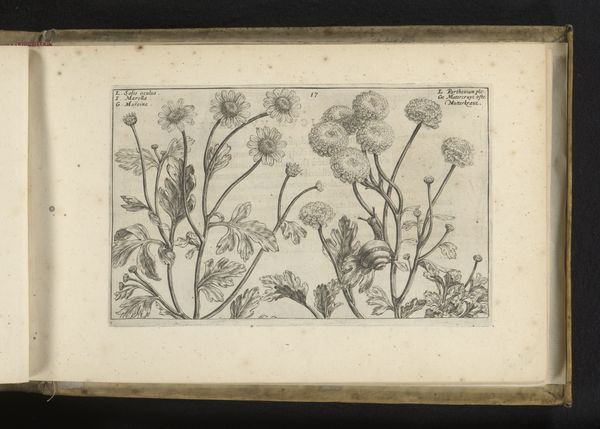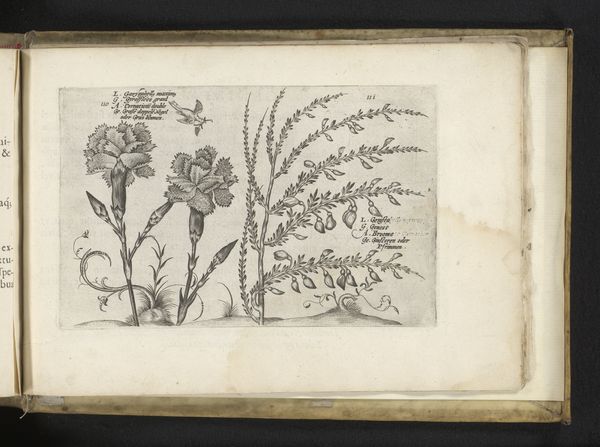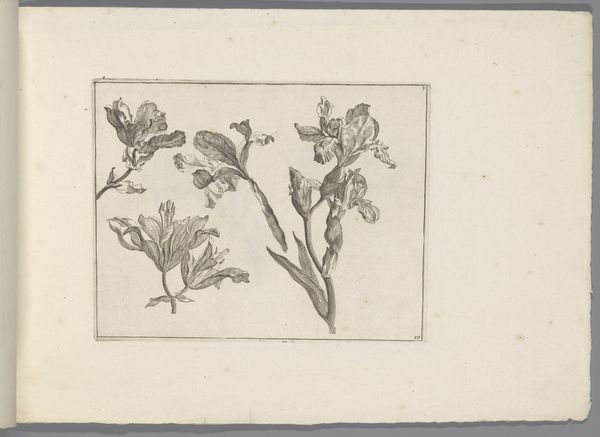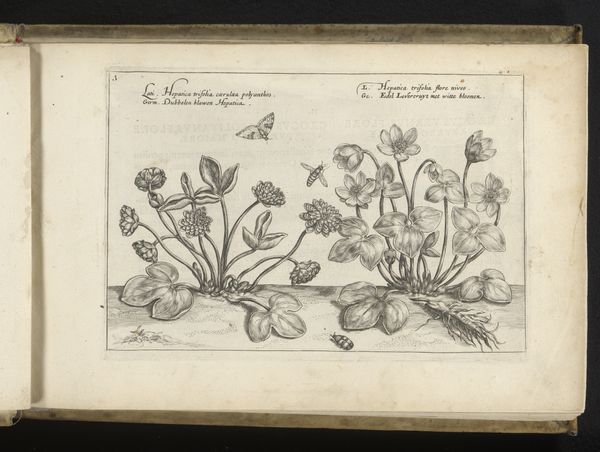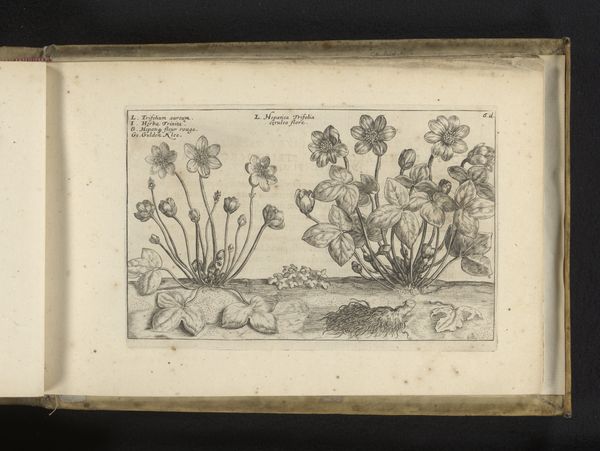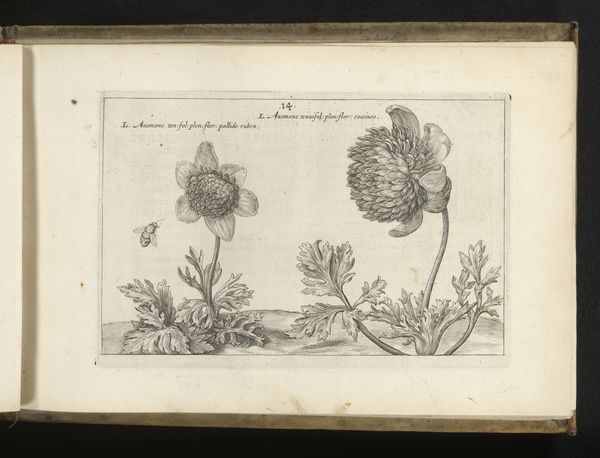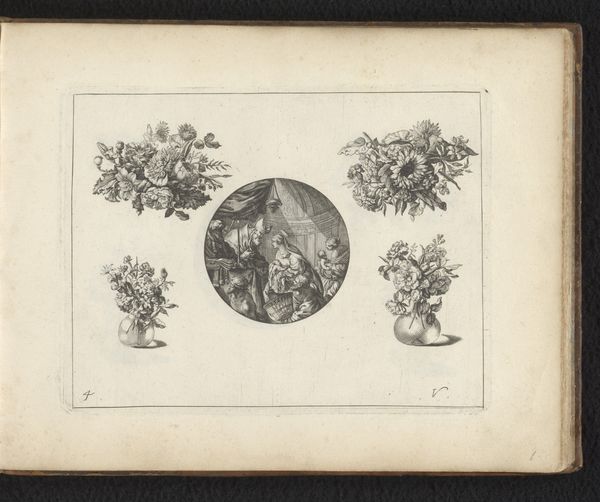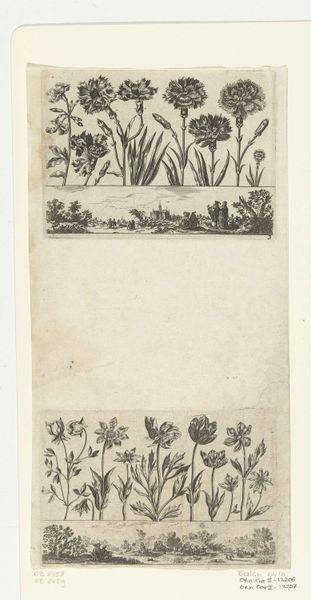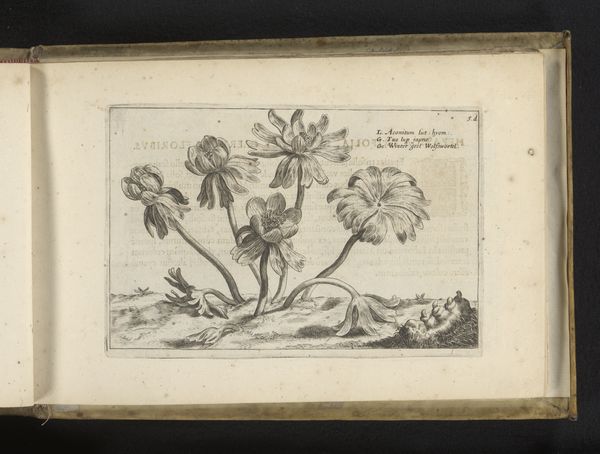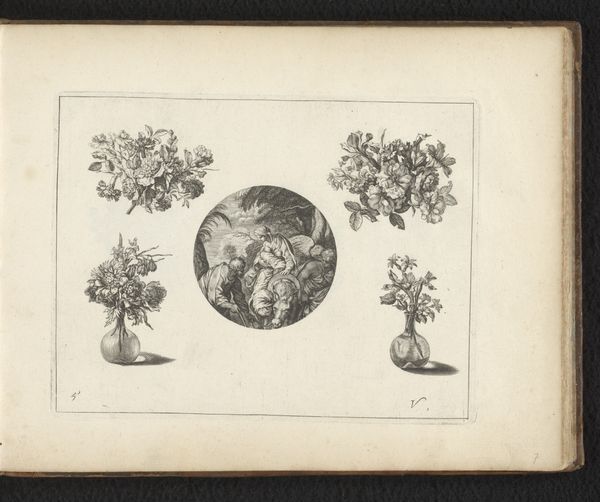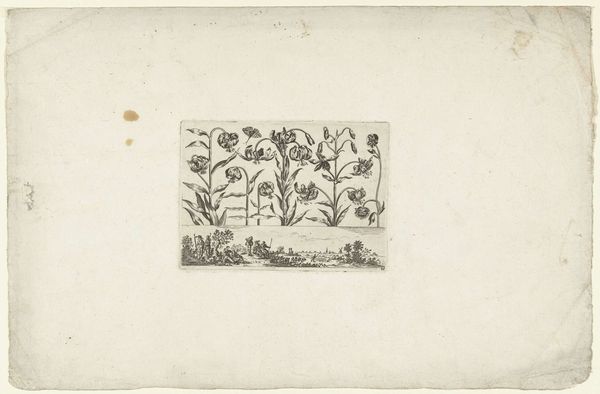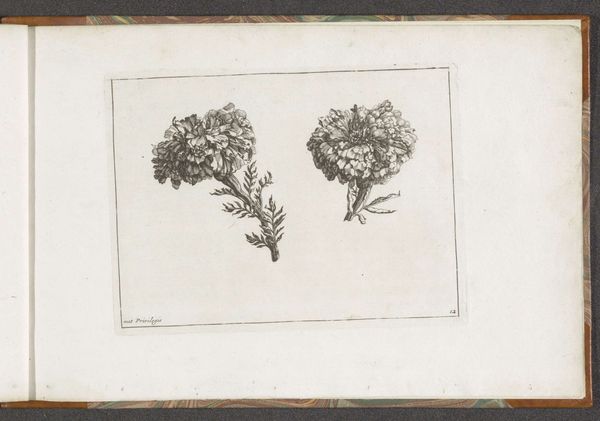
etching, engraving
#
etching
#
landscape
#
coloured pencil
#
pen-ink sketch
#
sketchbook drawing
#
northern-renaissance
#
engraving
#
realism
Dimensions: height 76 mm, width 117 mm
Copyright: Rijks Museum: Open Domain
Editor: Here we have Charles de Hooch’s “Landscape with a Chapel by the Water,” made sometime between 1610 and 1638 using etching and engraving techniques. The landscape has an ethereal quality to it, and the lines used in the printmaking create a lovely sense of depth. What draws your eye in this particular piece? Curator: My focus immediately shifts to the production. Etching and engraving during this period were highly skilled trades. Consider the labor involved in creating such intricate lines on a metal plate. The materiality of the copper plate itself, mined and processed, represents a network of social relations. We see here a commodity made by labour with an intention and purpose. It begs the question of who consumed this image and within what economic context? Editor: That’s interesting! I hadn’t considered the implications of the materials themselves. I was focusing more on the artistic representation of the landscape. Does considering the materiality change how we view the subject matter? Curator: Absolutely. Instead of seeing a serene landscape, we can also view this image as a document of early modern labor practices and emerging consumerism. How were such images used? As art objects? Souvenirs? Each tells a vastly different story and illuminates consumption behaviours that also help shape the narrative and place of “high art.” It's all part of understanding its cultural value at the time of production. Does thinking of the art in these ways add value, diminish, or otherwise change your perceptions as to what this type of art embodies and may seek to convey? Editor: That definitely gives me a new way of seeing art. Thanks! Curator: A pleasure. I find this lens to be transformative in looking at the story behind the piece.
Comments
No comments
Be the first to comment and join the conversation on the ultimate creative platform.
